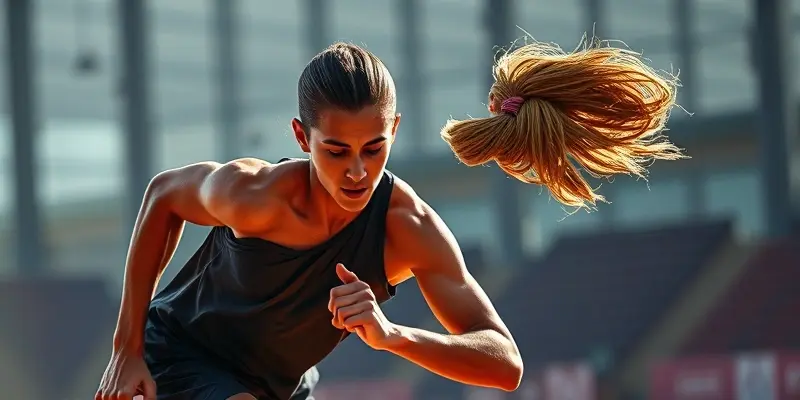Unlock Your Fastest Comeback: The Power of Neuro-Muscular Activation in Recovery
Ever wondered why professional athletes seem to bounce back from injuries faster than the rest of us? It’s not magic—modern recovery techniques, especially neuro-muscular activation drills, play a huge role in getting them back on top form quickly and safely. Whether you’re pushing for a new personal best, coming back from a sprain, or just curious about the science behind staying injury-free, this guide is for you.
What Are Neuro-Muscular Activation Drills?
Imagine your nervous system as your body’s electrical wiring, and your muscles as powerful machines. Neuro-muscular activation drills are specialized exercises that train your wiring (nerves) to activate your machines (muscles) quickly and efficiently.
- For beginners: Think of rebooting your smartphone so it runs smoother—these drills “reboot” your movement patterns.
- For advanced athletes: They fine-tune the timing and coordination needed for peak performance and bulletproof recovery.
By enhancing the conversation between your brain and muscles, you’re not just getting stronger—you’re moving smarter.
Why They’re Game-Changers in Recovery & Injury Prevention
Injury Prevention: Building Resilience from the Inside Out
Most sports injuries—like sprains or strains—happen when your muscles don’t react fast enough to support your joints. Neuro-muscular activation drills:
- Improve joint stability (think stronger knees and ankles during cutting or jumping)
- Boost proprioception, which is your body’s ability to sense position and movement
- Reduce “risky” movement patterns, such as landing awkwardly or with knees caving in
Example: Studies show a structured 12-week neuromuscular training program can lower ACL injury risk by over 50% in youth athletes.
Faster Recovery: Don’t Just Heal—Come Back Better
When you’re injured, you lose not just strength, but also coordination and confidence. Neuro-muscular routines bridge this gap:
- Retrain healthy movement patterns
- Rebuild muscle memory and dynamic stability
- Start gentle—glute bridges, single-leg stands—and progress to more dynamic moves as you heal
Fact: Athletes incorporating these drills return to sport sooner and with better movement quality than those who stick to traditional rehab alone.
Safe Return to Training: The Step-By-Step Approach
Rushing back is risky; strategic activation drills allow you to:
- Gradually reintroduce complex movements
- Monitor weaknesses or imbalances before they cause setbacks
- Build a foundation of strength, speed, and agility that actually lasts
Build Your Own Smart Recovery Plan
Here’s how you can apply neuro-muscular principles for maximum benefit—whether you’re a gym rookie or a seasoned athlete.
Step 1: Core Drills for Everyone
- Balance: Start with single-leg stands or use a stability cushion.
- Motor Control: Try running in place, coordinating arms and legs at a slow cadence.
- Dynamic Warm-ups: Leg swings, torso rotations, and high knees get your system “online.”
Step 2: Progress with Purpose
- Light plyometrics: Mini-jumps, skipping, or lateral bounds as confidence grows
- Isometric & eccentric movements: Slow, controlled bridges and clamshells to reinforce muscle firing
Step 3: Support Recovery with Nutrition
- Protein for muscle repair (aim for every meal)
- Antioxidants from colorful fruits and vegetables to combat inflammation
- Collagen-rich foods (bone broth, gelatin) and omega-3s for joint and tendon restoration
- Stay hydrated—even small deficits slow healing
Step 4: Tech & Gadgets
- NMES devices: Can “wake up” lazy muscles after injury
- Vibration plates: Useful for blood flow and motor control
- Apps with metronomes: Help stay rhythmic during early rehab phases
Step 5: The Mind Game
- Set small, measurable goals—like balancing for 30 seconds on each leg
- Use cues (visual or tactile) to reinforce good technique
- Celebrate improvements in confidence and coordination, not just pain reduction or muscle size
Real Success Stories: From the Gym to the Field
Sarah (Amateur Runner): After a rolled ankle, Sarah combined basic balance drills and glute bridges with healthy meals. She shaved a week off her expected recovery time and felt more stable than before her injury.
Mike (Weekend Warrior): Mike integrated light plyometrics and NMES at the advice of his coach. He now jumps higher, lands softer, and hasn’t missed a game all season.
Coach Anna (Pro-Level): “I rehab my athletes with step-by-step neuromuscular routines. Not only do they get back on the field sooner, but they come back stronger—and stay there.”
Your Next Steps: Take Control of Recovery
Modern recovery isn’t just about rest—it’s about training your brain and body to work together. Neuro-muscular activation drills help prevent injury, speed up your healing, and lay the foundation for lifelong athletic success.
Ready to level up your recovery? Try integrating these drills and nutritional tips into your weekly routine. Questions? Success stories? Drop them in the comments—we’re here to help you thrive inside and outside the gym.

